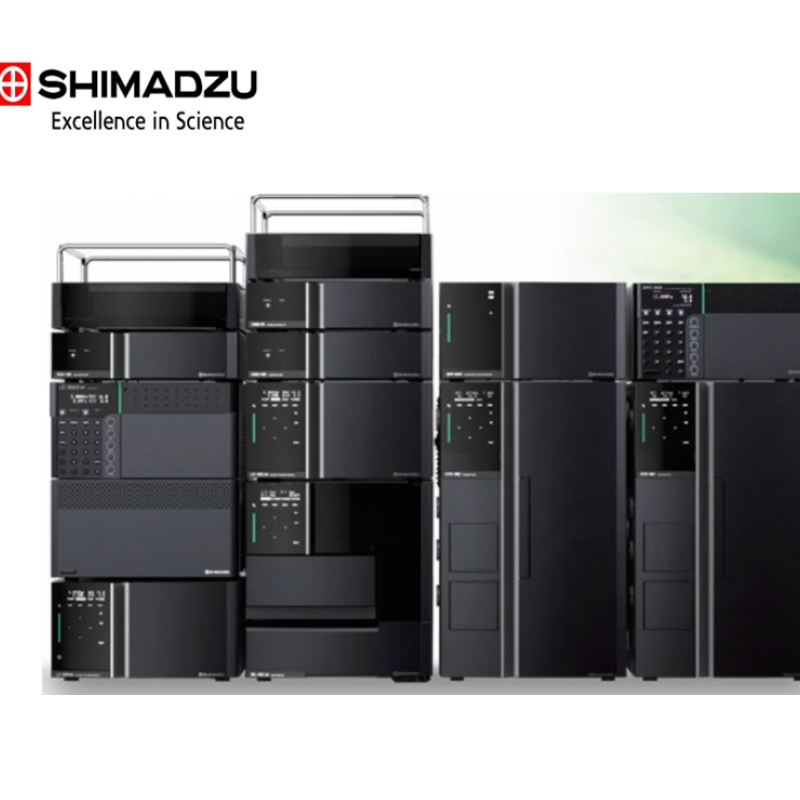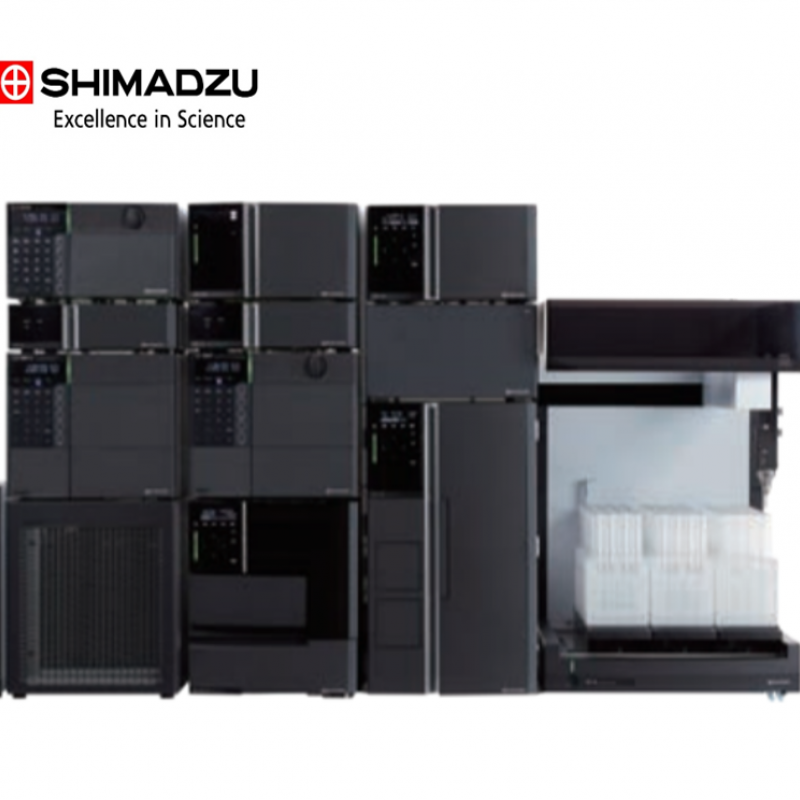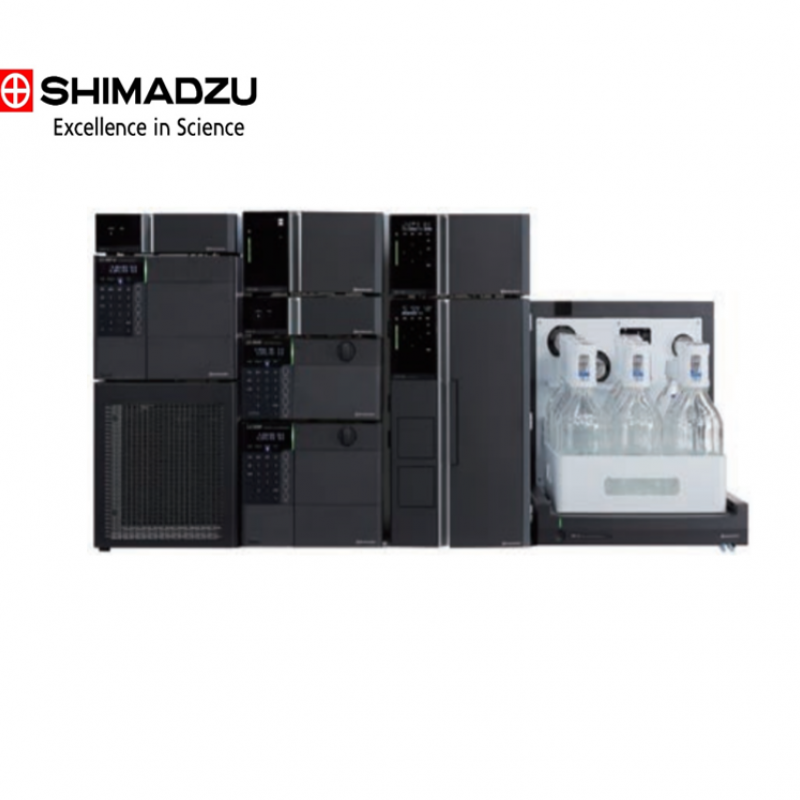In conventional (traditional) LC/MS (liquid chromatography mass spectrometry) and GC/MS (gas chromatography mass spectrometry) techniques, users are faced with difficulties such as laborious and long sample preparation, degradation of sensitive compounds during sample preparation and peaks that are not visible in the noise.
Nexera UC SFC Chromatography offers high-level solutions to all these challenges.
- A batch fractionation system designed for large volume fractionation
- Multi-fraction system to separate multiple peaks
- An analytical fractionation system designed for analysis scale fractionation
Supercritical Fluid Extraction Chromatography (SFC) Analytical Advantages
The supercritical carbondioxide (CO2) used as the mobile phase for SFC offers unique advantages.
Five of the advantages of using supercritical carbondioxide for SFC analysis are described below.
- Low Polarity: The polarity of supercritical carbon dioxide is similar to n-hexane.
- Miscibility with Other Organic Solvents: Supercritical carbon dioxide can be mixed with methanol, which is a water-soluble solvent. In contrast, n-hexane, which offers low polarity similar to supercritical carbon dioxide, cannot be mixed with methanol, due to its relatively high polarity.
- Low Viscosity: Supercritical carbon dioxide has lower viscosity than solvents such as water. That results in lower column back pressure, assuming the column has the same internal diameter and length, is packed with the same size particles, and supercritical carbon dioxide is pumped through the column at the same rate.
- Vaporization: Supercritical carbon dioxide evaporates at a temperature and pressure lower than the critical point.
- Solvent Cost: Similar polarity of of super critical CO2 is and of n-hexane, makes former appropriate to be used for normal phase separations. Normal-phase chromatography consumes large amounts of solvent, however SFC consumes less solvent and involves treating lesser liquid waste, the overall solvent cost is lower than for HPLC.
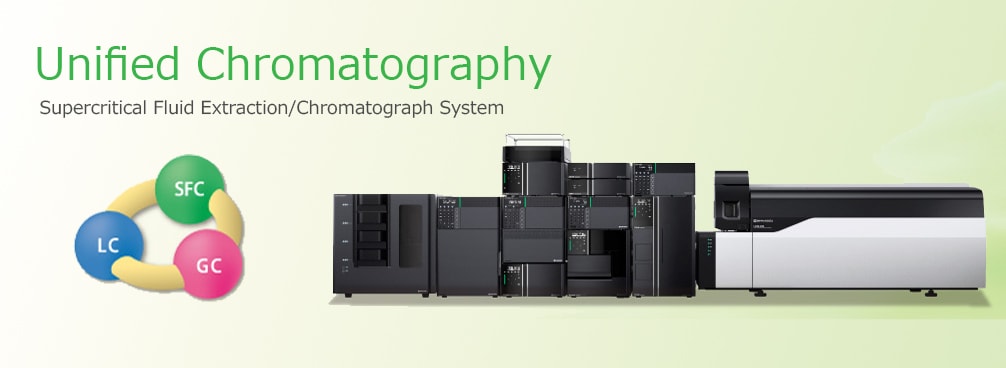
Another chromatographic technique or just one technique you need?
Nexera UC Supercritical Fluid Chromatography improves your analytical workflow using Unified Chromatography, an entirely new separation technology that combines sample preparation, analysis with various separation modes, and high precision detection.- Very fast separation speed due to the relatively low viscosity of supercritical fluid
- Improved peak capacity and chromatographic resolution
- Efficient separation of analogues and/or chiral compounds by high penetration mobile phase
- Different separation mode leads to high sensitivity
- Improved sensitivity resulting from split-less introduction into detector
- Reduction of environmental impacts and costs by reducing amount of organic solvents needed
Some Applications
- Isomeric compounds
- Chiral analysis
- Analysis of biomarkers from bloodstains
- Quick start to cleaning validation in the pharmaceutical industry
- Analysis of polymer additives
Comparison of QuEChERS sample preparation and Nexera UC in the analysis of residual pesticides
A typical sample preparation takes 35 minutes and requires several manual steps. With Nexera UC, the same sample can be ready for on-line SFE/SFC analysis in as little as five minutes with only a few simple sample preparation steps.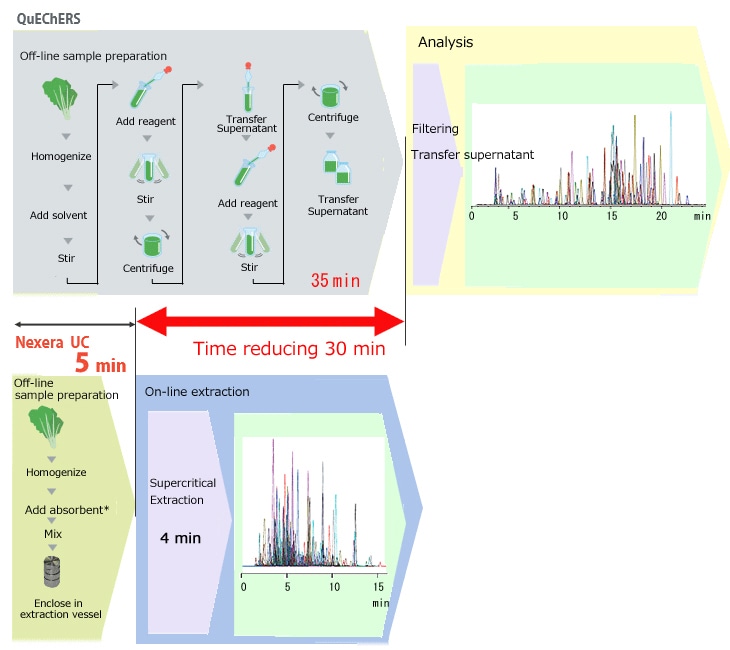
Higher Resolution
Improved separation and detection capabilities result from the low viscosity and high diffusion coefficient of supercritical fluid. As shown below, Nexera UC demonstrates high-separation selectivity for isomeric compounds that are difficult to separate by conventional LC.
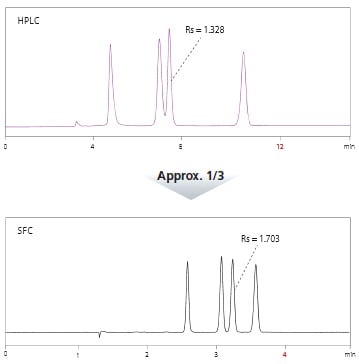
Sensitivity results from different separation modes in HPLC vs SFC
Supercritical fluid has unique properties different from liquid. Using SFC in front of a mass spectrometer offers greater sensitivity than achieved with LC/MS/MS (liquid chromatography mass spectrometry).
Nexera UC was designed using a completely different separation technology, Unified Chromatography, to enhance the analytical workflow. This chromatographic technique combines sample separation, analysis with various separation modes, and high precision detection.Enhanced sensitivity using splitless transfer to MS (mass spectrometer)
Low dead volume back pressure regulator suppresses diffusion of peaks and can transfer the total eluate directly to an mass spectrometer to achieve higher sensitivity.

Preparative SFC (Supercritical Fluid Chromatography) Systems
Preparative LC (liquid chromatography) is a technique used to purify samples for specific target components. It is used in a wide range of fields, including chemicals, pharmaceuticals, and foods. Preparative LC serves as a powerful tool for achieving higher purity and recovery rate levels of target components, but it requires drying and powderizing steps. SFC can improve preparative workflow efficiency by significantly reducing the amount of work involved in the powderization process after preparative purification.Nexera UC product line includes three systems
- A stacked fraction system intended for large volume fractionation
- A multi-fraction system for separating multiple peaks
- An analytical fraction system intended for analysis-scale fractionation.



